Status: Native
Synonyms:
None
Chiloscyphus polyanthos is a leafy liverwort. It has leaves inserted in an overlapping way on the stem such that the edge away from the stem tip is showing (succubous insertion.) The translucent leaves are rounded and have hexagonal cells with 2-4 oil bodies. The cells are relatively small. It has underleaves that have two acuminate lobes which have a tooth on each side. The small underleaves are difficult to see well because they are very fragile and easily destroyed with even careful handling. The rhizoids originate only from the bases of the underleaves. Chiloscyphus polyanthos is similar to C. pallescens, which has a slightly notched leaf shape and relatively larger cells with 6-8 smaller oil bodies per cell. Chiloscyphus polyanthos in the Gila National Forest is found nearly submerged on rocks in slowly moving water.
Please click on an image for a larger file.
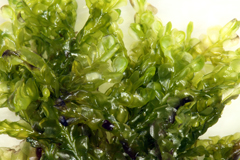
Chiloscyphus polyanthos, photo Russ Kleinman & Karen Blisard, Mogollon Mtns., Bead Spring, June 10, 2010
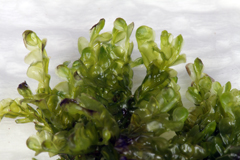
Chiloscyphus polyanthos, closeup, photo Russ Kleinman & Karen Blisard, Mogollon Mtns., Bead Spring, June 10, 2010
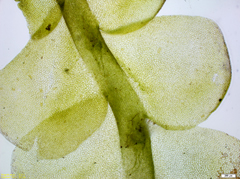
Chiloscyphus polyanthos, 40X photomicrograph demonstrating bilobed underleaves with rhizoids emanating from their base, photo Russ Kleinman & Karen Blisard, Mogollon Mtns., Bead Spring, June 10, 2010
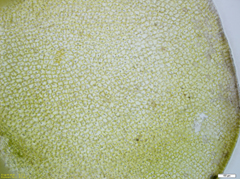
Chiloscyphus polyanthos, 100X photomicrograph of central leaf cells, photo Russ Kleinman & Karen Blisard, Mogollon Mtns., Bead Spring, June 10, 2010
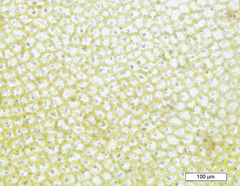
Chiloscyphus polyanthos, 100X photomicrograph of central leaf cells showing 1-4 oil bodies per cell, photo Russ Kleinman & Karen Blisard, Mogollon Mtns., Bead Spring, June 10, 2010
Back to the Index